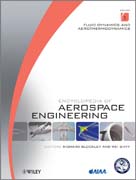
Aerospace engineering is an established subject but also one that has to respond continually to new commercial, environmental and securityrelated factors, rapid advancement in science and engineering, and to the technological challenges of previously unexplored aircraft design concepts, and space-based systemsand travel. The Encyclopedia comprises over 500 articles encompassing scientific fundamentals and current industry practice across the full spectrum of aerospace engineering. Typically 10 pages in length the contributions are writtenat a level appropriate to an advanced undergraduate level readership and above. The work is structured thematically across 46 subject areas forming eight volumes. The online edition of the work will feature extensive cross-referencing and search functionality, and will be updated on a regular basis to keep abreast of advances in the field. An international editorial team and author base, with representation from both the academic and industrial sectors, is led bytwo Editors-in- Chief, who bring a wealth of industrial and academic experience to steering the project. They have commissioned original contributions fromexpert authors in the fields of engineering science that support the study and development of aerospace technology and vehicle design. The Encyclopedia of Aerospace Engineering will provide an invaluable aid to education and trainingfor university engineering and science departments, aerospace manufacturers and suppliers, and government, industrial and military research establishments. INDICE: 0. Introduction 1. Fluid Dynamics and Aerothermodynamics 2. Propulsion and Power 3. Structural Technology 4. Materials Technology 5. Dynamics and Control 6. Environmental Impact, Manufacturing and Operations 7. Vehicle Design 8. System Engineering.
- ISBN: 978-0-470-75440-5
- Editorial: John Wiley & Sons
- Encuadernacion: Cartoné
- Páginas: 5480
- Fecha Publicación: 01/07/2010
- Nº Volúmenes: 9
- Idioma: Inglés
